Zero Retries 0224
2025-10-17 — Pacificon 2025 Zero Retries Debrief
Zero Retries is an independent newsletter promoting technological innovation in and adjacent to Amateur Radio, and Amateur Radio as (literally) a license to experiment with and learn about radio technology. Radios are computers - with antennas! Now in its fifth year of publication, with 3200+ subscribers.
About Zero Retries
Steve Stroh N8GNJ, Editor
Email - editor@zeroretries.net
On the web: https://www.zeroretries.org/p/zero-retries-0224
Substack says “Too long for email”? YES
⬅️⬅️⬅️ Previous Issue of Zero Retries \ Next Issue of Zero Retries ➡️➡️➡️
In this issue:
Request To Send
Paid Subscribers Update
Welcome New Zero Retries Readers / Fans from Pacificon 2025
Zero Retries Digest Redux
In the Service of Being More Readable, Short Shrift Issue
Weekends Are For Amateur Radio!
Pacificon 2025 - Great Conference!
The Zero Retries Table
open.space
Meshtastic
AREDN
MMDVM
Ed’s Antennas - Quickly Sold Out
Professor Bruce Perens K6BP
Drone Scan 3D
Elecraft Sponsored Susan Wood Demonstrating (Hand) Surface Mount Soldering
Pacificon 2025 Flea Market
Again, Thanks!
MORE Technological Innovation In Amateur Radio
Amateur Radio is Missing the SDR “Forest” by Focusing on the Legacy “Trees”
Comments Summary From Previous Issue
Zero Retries Boilerplate
Permission for Reuse of Zero Retries Content
Keywords for this Issue
Footnotes for this Issue
Comments for This Issue (Redirect to This Issue’s Comments page)
Request To Send
Commentary by Editor Steve Stroh N8GNJ
Paid Subscribers Update
My thanks to Prefers to Remain Anonymous 08 for renewing as Founding Member Subscriber 0008 to Zero Retries this past week (3rd year!)
Founding members are listed in every issue of Zero Retries!
My thanks to Prefers to Remain Anonymous 15 for renewing as an Annual Paid Subscriber to Zero Retries this past week (3rd year)!
My thanks to Prefers to Remain Anonymous 102 for upgrading from a free subscriber to Zero Retries to an Annual Paid Subscriber this past week!
My thanks to Prefers to Remain Anonymous 103 for becoming a new Annual Paid Subscriber to Zero Retries this past week!
My thanks to Prefers To Remain Anonymous 101 for upgrading from a free subscriber to Zero Retries to a Paid Subscriber this past week!
Financial support from Zero Retries readers is a significant vote of support for the continued publication of Zero Retries.
Welcome New Zero Retries Readers / Fans from Pacificon 2025
Welcome folks! Thanks for paying attention to Zero Retries at Pacificon. Feel free to drop me an email with any questions - steve@zeroretries.net.
Zero Retries Digest Redux
After “What’s with the name Zero Retries?”, the most common thing that was mentioned at the Zero Retries table at Pacificon 2025 is how much folks loved Zero Retries…
And how few actually read… the whole newsletter… every week.
That was sobering to hear that same assessment of Zero Retries, repeated so often by many different people.
I don’t quite know… yet… what the answer is. One of the reasons that there’s so much unique information in Zero Retries is that my brain (now in its sixth decade of use) has somehow1 organized itself to think best, most logically, by “writing it down” (as in typing, not dictating).
But Zero Retries is apparently missing the mark, to some extent, if so many fans, who actually do love Zero Retries, just can’t absorb all of the info. Especially when new info comes along the very next week. (Yeah, I don’t really know how I do it either.)
Three potential solutions come to mind:
In addition to the normal, verbose version, distill the weekly Zero Retries issue into a terse “Digest” version,
Break the weekly “big newsletter” into more digestible chunks and post them as blog posts (thanks K4HCK!) for easier consumption (and easier social media sharing),
Create a monthly Zero Retries Magazine. This is currently just a wild idea.
Mostly what I want to say in the above (once again, too verbosely) is that enough of you Zero Retries readers made the same point, consistently, that you love Zero Retries, but it’s just too much detail (most of the time… except for the occasional article that you really love, then there’s not enough detail).
Thus the “too much detail” plaint is heard, understood, and probably to be “fixed” in conjunction with the migration off Substack (planning and execution of which can now proceed after “conference craziness season” is over for 2025). The migration is still planned to occur at the dawn of 2026.
In the Service of Being More Readable, Short Shrift Issue
For this issue I’ll forgo the ZR > BEACON section
Short mentions of Zero Retries Interesting items.
that is often the most popular part of Zero Retries. There’s lots of ZR > BEACON material (too much) in queue for next issue.
Weekends Are For Amateur Radio!
I hope to get familiar with my new, safe, shack battery unit this weekend. I wrote most of an article about this new battery unit but I have to do a bit more fact-checking about my plans for it before committing an article to the subject. So, perhaps next week.
I want to spend most of the weekend in N8GNJ / Zero Retries Labs while the October good weather holds here in the far Northwest corner of the Pacific Northwet and all four shop doors can be wide open.
But the wet / monsoon is definitely coming, as evidenced by the nearby Cascade Mountains receiving their first significant snowfall of the season. But, they’re so beautiful this time of year!).
Have a great weekend, all of you co-conspirators in Zero Retries Interesting Amateur Radio activities!
Steve N8GNJ
Pacificon 2025 - Great Conference!
By Steve Stroh N8GNJ
Pacificon 2025 (Wayback Machine link2) was a great conference at a great venue. There’s a lot to recommend a conference under the same roof as a conference hotel such as the San Ramon Marriott, even if the hotel rooms are priced a bit higher than “shopping around”.
The Zero Retries Table
Tina and I had a great time having a Zero Retries table at Pacificon 2025. Last year was our first time attending Pacificon and we were impressed enough with the event overall that for Pacificon 2025 we got a table and that worked out well to meet many current, and new Zero Retries fans.
I composed one page “handout” flyers for M17 Project and Zero Retries (see Zero Retries 0223 for PDF downloads of those) and those worked quite well. Those curious about Zero Retries either took a photo of the QR code (perhaps 25%) and the rest took one of the Zero Retries flyers. About a third of the M17 Project flyers were distributed at the Connect Systems booth which was selling their various M17 portable radios, and the remainder at the Zero Retries table.
Because we had a few ARDC flyers and stickers left over from GRCon 2025, we got lots of comments that an ARDC (table) presence was missed.
Folks were also disappointed that there was no table / real representation for M17 Project at Pacificon, other than that I showcased the LinHT project at the Zero Retries table to those that were interested, especially one person that was intensely interested - we had a great, long conversation about LinHT.
If you’re a fellow M17 Project fan and you (hopefully a few of you) would be willing to staff a table for M17 Project at Pacificon 2026, please get in touch with me - steve@zeroretries.net and perhaps we can work something out to put together an M17 Project table for Pacificon 2026.
But, “Zero Retries” is still a bit of a puzzle for most Pacificon attendees. At most, perhaps one in ten passerby stopped and inquired what Zero Retries was about. I eventually settled on the quick phrase “We’re selling free Amateur Radio newsletters”. That was humorous enough that it caused a little bit of interest for some that would have just passed us by. But, when we would explain Zero Retries, more than half who listened to our pitch, said “Oh, I don’t do data / digital”.
But even with that, we had more, and more positive response to Zero Retries at Pacificon than any other conference (even beyond that we’ve only ever tried a Zero Retries table once before, at SEA-PAC, which didn’t work out at all). Thus, if at all possible, Zero Retries will be a return exhibitor at Pacificon 2026. Possibly we’ll even have a second table to showcase some of the Zero Retries Interesting data communications systems.
open.space
I really have to get into the habit of taking selfies with cool stuff like this.
The “Oh… WOW!” of Pacificon 2025 was, for me, the hallway exhibit by open.space.
Our first kit is a low-cost digital phased array, with high transmit power and excellent receive sensitivity. It supports flexible transmission modes across any 40 MHz bandwidth in the C-band (4.9–6 GHz).
This display unit shown above was mostly a mockup / prototype, but it beautifully illustrated their concept. Each cluster of four units - Quad: A Software-Defined Radio Tile…
is independent, but capable of synchronization / beamforming (phased array). The interconnection for data / control / synchronization / beam forming is via daisy-chained jumper ribbon cables on the back. Not exactly elegant, but it works. But the power distribution (which, remember, has to deliver a consistent power supply across the entire array) was pretty ingenious - as each Quad is screwed into the frame, the front “plane” that each Quad is pressed into provides power (or ground), and the screw that secures each Quad to the frame from the back providers power (or ground). (I didn’t learn which “power” plane was which.)
Here’s some of the specs from their website:
Overview
This 4-antenna SDR tile designed for arraying. Drop-in compatible with Raspberry Pi pipelines (GNU Radio, Python/C++, SoapySDR) .
Useful as a standalone SDR or as a building block for larger phased arrays.Key features
Frequency: 4.9–6.0 GHz (C-band), full duplex
Per-antenna bandwidth: 40 MHz; 8+8-bit I/Q
Tx power: 1 W per antenna • Rx NF: ~1.2 dB
Polarization: RHCP (Tx), LHCP (Rx)
MEMS TCXO • Jitter ~1.4 ps
FPGA: Lattice ECP5 • Latency < 1 ms
Power: 12 V DC (≈25 W peak)
Standalone applications
General-purpose 4×4 MIMO Software-defined Radio
Fox-hunting, direction of arrival (DOA), RF exploration
Open Wi-Fi router, Open 4G/5G base station
Drone HD links, robotics communications
Think of that last application… imagine how useful that single application will be!
And this is an open source project!
This project, and these developers, will get some serious attention, fast, from numerous applications. This could easily become a new product / service providing high speed data links on 5 or 6 GHz from a high rise apartment balcony.
AREDN developers… PING! Imagine adding a spatial / steering component to AREDN!
At the table, they were swamped with attention. I was only able to get 30 seconds or so of attention from one of the booth staff, and the primary developer (whose name I didn’t get) was completely swamped every time of the numerous times I returned to the table hoping for a brief conversation.
And… my favorite potential application for open.space is… space! Especially a potential Geosynchronous Earth Orbit (GEO) payload… or now, with a beam steering capability, even Low Earth Orbit (LEO) satellites. A page about Amateur Radio GEO will be one of a number of dedicated “consolidation” pages (as this issue is published, it’s largely blank). As that page will eventually explain, a previous attempt at an Amateur Radio GEO for the Western Hemisphere used the 5 GHz band as uplink, and 10 GHz band as downlink. Thus open.space’s capability to “focus” the energy of a number of low power 5 GHz modules would seem one way to generate a sufficiently powerful signal for communications with a GEO payload or satellite.
A week later, this still has me excited thinking about the possibilities of this project.
Meshtastic
Meshtastic was ably represented at Pacificon 2025 by Benjamin Faershtein KO6CNT both at a table and a presentation. While K06CNT mostly discussed “unlicensed” Meshtastic (operating on the North America 902-928 MHz band as “Part 15 / Industrial, Scientific, and Medical - ISM devices)”, he did discuss some of the uses of Meshtastic operating as Amateur Radio (turn off encryption, some 433 MHz devices, etc.) If I was an organizer of club presentations or an Amateur Radio conference (other than ZRDC), I suggest getting in touch with KO6CNT to do his excellent presentation on Meshtastic. If you have fears about the future of Amateur Radio, talk to KO6CNT. His activities include:
Started a radio club at Wilcox High School
Started the Meshtastic Bay Area Group (Bayme.sh)
Developer for the Meshtastic project
One of the best ideas I saw at the Meshtastic table was a collection of laminated 8.5 x 11 inch handouts about a dozen or so Meshtastic hardware options. Browse through them to find one that seems interesting / applicable to your needs / interests, and click the QR code on any of the sheets. It was an elegant solution!
AREDN
I can’t believe I didn’t get a photo of the AREDN table at Pacificon 2025. Apologies Orv and Tim!
AREDN had two presentations by AREDN Ambassador Orv Beach W6BI and an AREDN Lead Developer, Tim Wilkinson KN6PLV. AREDN had a booth that was always busy. Unfortunately I missed both presentations, but talked to both W6BI and KN6PLV briefly. I was up to speed on most aspects of AREDN from KN6PLV’s stellar presentation at ZRDC 2026 less than a month ago.
MMDVM
The MMDVM booth staffed by Jim Mclaughlin KI6ZUM of ZUMRadio and Michael Rickey AF6FB and was also always busy. They were showing off several projects in progress.
MMDVM was conceived in Spring, 2015 by Jonathan Naylor G4KLX, so the “project” is more than a decade old now, and that was most of KI6ZUM’s MMDVM presentations at the Pacificon banquet and the Saturday seminars.
As I understand it, there are basically two hardware, with software support, development projects underway for the MMDVM project. Unfortunately I didn’t take good enough notes / photos to really do justice to each of these items.
I/Q Radio - The use of a new radio module, whose I/O is I/Q, would enable truly any modulation, including FM, which is difficult or not possible on current MMDVM radio units because the receive… and transmit… is broken down entirely into bits and thus can be manipulated in software on a host computer.
Transcoder - This is a module which would provide “any modulation to any modulation” transcoding.
There is also progress being made on investigating more capable processor and radio modules than are currently used in MMDVM units and hotspots.
GTDATA
At Pacificon 2025, KI6ZUM had a couple of discussions about the branch of MMDVM development called MMDVM-TNC (currently on hold for other development work). We agreed that there is a huge potential for “MMDVM-TNC” and we agreed to work together on developing and promoting it in 2026.
One issue I pointed out to G4KLX in an email after Pacificon (he was not able to attend) is that the name of this technology is somewhat problematic - what’s a “TNC” in 2025 and beyond? Because G4KLX is working on creating a specification for a new Digital Voice standard that he is calling GT-DV, I suggested to him, based on “GT-…” that MMDVM-TNC might be renamed GT-DATA. G4KLX counter-proposed GTDATA, and with that, all of my future references to “MMDVM-TNC” will be deprecated in favor of “GTDATA”.
Ed’s Antennas - Quickly Sold Out
A highlight of Pacificon 2025 was meeting Ed Fong WB6IQN of Ed’s Antennas (“Oh, you’re the one that wanted four of them!) Coincidentally, I had emailed him the week prior to Pacificon to arrange to purchase a TBJ-1 (2m / 1.25m / 70cm) antenna and have it shipped to me. He replied that not only would he be selling the TBJ-1 and other models at Pacificon, but he would be selling them for a special show price of $50, no tax, and of course, no shipping. I asked him to reserve four for me, and I barely found him in time to be able to purchase the four TBJ-1s that I wanted before he sold out by early Saturday afternoon.
Professor Bruce Perens K6BP
I wasn’t able to attend either of K6BP’s presentations:
The Counterpoise: The Other Half of Your Antenna during the Friday Antenna Seminar
Building a Ham Radio Station in Your RV during the Saturday seminars.
But I did read both of K6BP’s slide decks (the links above) as I’m a fan, and saw them posted because I have an RSS feed from his website - perens.com).
I learned a lot from just reading both of his slide decks, especially about counterpoises on antennas. In his “RV” presentation, K6BP also provides a “least you need to know” about the basics of purchasing a modern, reasonable cost recreational vehicle (trailer). I’m confident you’ll learn a lot, as I did, from both presentations - highly recommended!
Drone Scan 3D
This “Drone Scan 3D” (a web search shows a number of others with that general name) product / company is brand new… to the point that their website doesn’t provide any clue about their actual product, not even a PDF of the info sheet that they were distributing at Pacificon 2025.
One of the main takeaways from K6BP’s Counterpoise presentation (see above) is that there’s only one true way to measure the true effectiveness of an antenna - measure the near field strength from a number of points. There’s two ways to do that. The hard / expensive / time consuming way is to create an open field test range with no (distorting) obstructions.
The easy / modern way is to use a drone. As far as I can tell, completely coincidentally, at the same event where that recommendation was made, Drone Scan 3D unveiled such a capability for the latter at Amateur Radio prices ($399, if memory serves; $300 through 2025-10-31. They had just sold their last unit by the time I arrived at their table).
Drone Scan 3D’s product consists of 3 elements:
Software Defined Receiver, with a (broadband) loop antenna combined with a Raspberry Pi Zero 2 W (plus a battery) that is
installedattached with Velcro on a (big enough) drone,A module that attaches to the radio under test to cause transmissions at specified times, triggered by the app (which also
attachesconnects to the drone unit Wi-Fi),A app for mobile devices (iDevice? Android? I forgot to ask) that works with the drone unit (you connect your devices Wi-Fi to the drone unit’s Wi-Fi).
In talking Drone Scan 3D’s founder Rudi Wiedmann K7RAW, like K6BP recommended, he wanted to measure the effectiveness of some of his antennas with a drone. After not finding such a capability, he decided to create it.
The receiver / antenna unit is pretty broadband - HF through almost all of the Amateur Radio UHF band 440 MHz (I managed to misplace the info sheet) so it will work to measure for most Amateur Radio antennas / radios.
I can easily imagine Drone Scan 3D units quickly becoming a Must Have item purchased by most Amateur Radio clubs so that it (along with a suitable drone and a skilled operator) can be loaned out to check out antenna / radio combinations, especially with tricky installations such as repeater antennas on communications towers.
Post Publication Update:
In a followup email, K7RAW corrected a number of details I got wrong (the errors are now strikethroughs) and I added the Drone Scan 3D brochure PDF.
A few clarifications about DroneScan3D: (datasheet attached).
Current “debut price” is $300 with FREE SHIPPING on my eBay page. It reverts to the $395 retail price on Oct 31, 2025. https://www.ebay.com/itm/146873523871
The architecture [of the receiver] is a 9-stage low-noise log-amp (DC-440MHz) front-end IC into an ADC IC delivering dBV over I2C to a Raspberry Pi Zero 2WH. The custom “HAT” also includes a 500mAh Lithium battery and on-board charger which takes USB power. No “app” is required. You simply “browse” into a virtual “dashboard” delivered to any WiFi-equipped browsing device by the DroneScan3D’s HotSpot. The AutoKeyer automatically links to that same HotSpot to key up your transmitter when you hit any angle button.
Since you didn’t get a chance to see my live demo outside on the grass at noon after the Antenna Seminar at Pacificon, I’d be happy to give you a live demo over Zoom anytime you like.
The loop antenna is NOT resonant, but acts like the old-fashioned antennas on TV sets. The reason for the loop is that its “cross-section aperture” presents the same diametric size to the antenna under test at all angles in an elevation scan. But you can build and play with ANY antenna you like with the included magnet wire. It’s all TBD by the experimenter for now.
I want to emphasize that this is a “Tool of Discovery” (we’re still learning a TON about it ourselves). It’s NOT a “polished lab instrument” but rather a field platform for further testing, refinement and revelations. It’s meant primarily for the seasoned “antenna experimenter” to learn and provide our community with feedback for enhancements.
This was such an obvious need that when K7RAW came over to the Zero Retries table to tell me about it, I was really surprised that such a capability didn’t already exist (at least, at a price point that’s reasonable for Amateur Radio).
I didn’t see a Drone Scan 3D system in action, but I have no reason to believe that it doesn’t work as K7RAW described it to me. I suspect that you’ll hear a lot about Drone Scan 3D in the coming months.
Elecraft Sponsored Susan Wood Demonstrating (Hand) Surface Mount Soldering
My mistake in not spotting this really cool demonstration sooner than the tail end of the conference on Sunday.
Kudos to Elecraft and Susan Wood for this excellent, timely demonstration!
I thought this table / demo was just part of the (admirable) learn to solder section of the Pacificon 2025 (they also did this at Pacificon 2024). If I had spotted it earlier in the conference, I would have chatted with Susan to compare notes as I’m one of the few that I know that’s willing to tackle SMT work (with the right equipment, which for me includes a swing arm stereo microscope).
Pacificon 2025 Flea Market
Pacificon’s flea market is a bit different. It’s a “tailgater” event, that’s only held on Sunday morning beginning at 06:00 and is pretty well breaking down by 09:00. So it’s cold and dark. Not only dark as in lack of daylight, but it’s held in a dark corner of the hotel parking lot. Thus you have to bring your own flashlight. I got so tired of squinting at items on the ground that it’s on my checklist for Pacificon 2026 to bring a hand-carry capable battery powered floodlight.
But overall the Pacificon 2025 Flea Market is a better grade of Amateur Radio / Electronics schtuff. For one thing, I didn’t see many boat anchors, not nearly the amount, and vintage, I see at the flea markets here in Western Washington and Oregon.
I scored five nice electronics book as donations for DLARC after persuading the seller that to donate them for posterity.
And, in a bit of Amateur Radio karma…
I had recently donated a Kantronics KPC-4 to a group in Alaska that is rebuilding their packet radio network. They needed that specific unit for their system, I had one in my packet radio collection. KPC-4s were pretty rare so it wouldn’t be easy to them to find one. Thus I felt that my KPC-4 would serve the greater good by going into the Alaska network than (probably) continuing to sit in archive storage in N8GNJ / Zero Retries Labs.
So… besides the books… guess what I found in the Pacificon 2025 flea market? Yep, a KPC-4. Actually, two KPC-4s - $30 for the pair. And the seller was a Zero Retries fan (or he spotted my name badge).
Again, Thanks!
Lastly, a big Thank You to the numerous folks that were Zero Retries fans who introduced themselves and said Thanks for Zero Retries. Again, there were far more such fans at Pacificon 2025 than any other conference I’ve attended in the more than four years that Zero Retries has been published. I’m sure we’ll be back at future Pacificons.
MORE Technological Innovation In Amateur Radio
By Steve Stroh N8GNJ
During some embarrassing technical snafus about getting my MacBook Air connected to the video projection system I asked for a show of hands for those who were already aware of Zero Retries - less than a dozen, out of perhaps eighty (just my guess) attendees.
Doing this presentation at Pacificon 2025 was one of the best parts of the entire event because so many people came up to me afterward and thanked me for letting them know about activities - projects, technologies, systems, that they had no idea were actually happening in Amateur Radio. Thus, that wonderfully validated the central premise of publishing Zero Retries - that folks aren’t hearing about the amazing amount of technological innovation that’s occurring right now in Amateur Radio… except for the reporting in Zero Retries.
I tried to make the point, and need to embed this in a slide, tersely, in a big, bold font, that I’m not necessarily trying to promote any of these projects / systems individually. Rather, I’m trying to demonstrate the totality of the technological innovation that is going on, now, in Amateur Radio. And that this could have easily been a presentation that’s 3x as long if I had a slide for each of the technological innovations that I’m trying to track in Zero Retries.
And, solely from Pacificon 2025, I’m going to have to add:
open.space
Drone Scan 3D
Below is the PDF of my (much requested) slide deck, slightly updated with a bit more detail, a few additional slides, and URLs mentioned for most of the projects / systems.
Thanks again those of you in the audience who made it such a rewarding presentation!
Amateur Radio is Missing the SDR “Forest” by Focusing on the Legacy “Trees”
By Steve Stroh N8GNJ
Frank M. Howell K4FMH let me know about his recent article Do We Still Have the Spark Gap in Our Rearview Mirror? K4FMH makes many valid points, and I recommend reading his article.
As I read it, K4FMH posits that many in Amateur Radio are… “limited” in their perspective of new radio technology by their (carefully developed) personal technological frames of reference, often from decades ago. I agree with K4FMH’s perspective, and encounter that issue frequently in my writing here in Zero Retries.
Unlike those involved in professional radio technology, Amateur Radio Operators can continue to use “legacy technology” indefinitely because there’s no economic or technological imperative to “force” technological advancement in radio usage as there is with mobile, or broadcast, or military radio technology, etc.
However, I think that K4FMH missed a fundamental point about the state of the art of radio technology that does impact Amateur Radio. He said:
But we must face that we are appliance operators today due to the sophistication of the technology. At best, we are appliance enhancers by homebrewing accessories, modifying “appliance” radios, and so forth. (Hear my interview segment with Ray Novak of Icom America on the ICQ Podcast where I coined this term.) Yes, some do build and operate fully homebrew rigs. Bill Meara N2CQR of Solder Smoke comes quickly to mind.
I think that K4FMH has some “Spark Gap in the rear view mirror” himself in that statement (hardware radio technology), and thus misses the impact of Software Defined Radio technology that’s user defined rather than vendor defined.
It’s completely valid for someone with some skill in Software Defined Radio to say3 “I needed a new type of radio, so I sat down and wrote one”.
Software Defined Radio technology enables Amateur Radio Operators to be back in the vanguard of advanced radio technology because SDR tools are available to anyone who cares to educate themselves in how to use them. The main example of this is GNU Radio, along with the assistive GNU Radio Companion which adds a Graphical User Interface that enables one to “drag and drop” available GNU Radio “Flowgraphs” into a diagram of a new radio. Then you just run your assemblage of Flowgraphs that compose your unique new radio.
Software Defined Radio hardware (receivers - SDRx, and transceivers - SDTx) are rapidly becoming commodity items for frequencies below…. 2 GHz4. Advancement in that category of is distinguished mostly by price / performance, because much like the commodity PC era that could run DOS / Window / Linux, as long as a particular SDR / SDT runs GNU Radio, “that’s good enough”.
Note that this is very different than “modifying appliance radios” that K4FMH describes. Like a PC without software, a SDRx / SDTx does nothing without software that the owner of the unit decides to load onto it - including software that they choose to write themselves.
In fairness, there is admittedly an element of “modifying appliance radios” in Software Defined Radio in stringing together available “Flowgraphs” in GNU Radio. No new invention is required, just perhaps a unique combination of previously available capability. One example of this is that a Flowgraph of LoRa has been created, which its creator company has only offered hardware (chipsets) that operate on unlicensed spectrum such as 433 MHz (unlicensed in Europe) or 915 MHz (unlicensed in North America). With a LoRa Flowgraph available to use on a SDT running GNU Radio, Amateur Radio Operators who can write GNU Radio Flowgraphs could run LoRa on 2m, or 1.25m.
It was sobering… and delightful to me in my perspective from Zero Retries, that more than half of the attendees at the recently concluded GNU Radio Conference 2025 were already licensed Amateur Radio Operators… and thus most of them have expertise with GNU Radio to “sit down and write a new radio” and then use it on Amateur Radio.
As yet another example of the new capabilities of Software Defined Radio technology in Amateur Radio is that Frequency Hopping (FH) technology is much in the tech news of late because it’s been (re)developed as an effective technique for Ukrainian drones dealing with semi-sophisticated jamming by Russian military units. FH is also an effective technique for deploying new systems in, for example, the Amateur Radio 2m (144-148 MHz) band which is “crowded” with “allocated repeaters”. The problem is, the vast majority of 2m repeaters are not in use the vast majority of the time - dead airtime. Thus FH is an effective way to make use of the excellent propagation and spectral characteristics of 2m while not “interfering” with “allocated repeaters” on 2m. It would be tough to argue that a 100 mS dwell time on a quiet repeater’s output (or input) frequency is “interference”.
Thus we could deploy entirely new systems on 2m using FH. Not to mention that SSB is “just another Flowgraph”, as is “Time Division Multiple Access - TDMA” which creates the potential for single channel repeaters. Those are just a few of many, many examples of technological innovation in radio technology that’s possible using Software Defined Radio technology… in Amateur Radio spectrum by Amateur Radio Operators.
One minor issue is that we need power amplifiers to boost the output of “test equipment” SDTx units to usable levels for Amateur Radio communications, but I expect that to be a solved problem in the coming months, certainly by the end of 2026.
To address K4FMH’s major point in his article, that most Amateur Radio Operators have “Spark Gap in [Their] Rearview Mirror”, many technological innovations such as those made possible by SDR technology are, and will “quietly” emerge, in pockets, within Amateur Radio. Many of those innovations won’t be seen at all by those with “Spark Gap in [Their] Rearview Mirror”. They can’t … because they lack an applicable frame of reference. Additionally, most Amateur Radio Operators won’t (don’t - present tense) have any idea that such technological innovations are occurring because they’re not being mentioned in legacy Amateur Radio media. Such technological innovations are only being mentioned on Discord, or Github, or doctoral dissertations, or paper presentations at GRCon, or personal websites, etc.
And, as I can identify and write about such innovations, here in Zero Retries.
Comments Summary From Previous Issue
Comments from Zero Retries 0223
Stellar observation about a recent Request For Comments by the US FCC (GN Docket 25-133 - Re: Delete, Delete, Delete) and perhaps another round of comments is warranted now that we’ve seen the first results of this RFC.
Lots of (repeated) angst over my promotion of VARA FM… and the intrinsic requirement of that recommendation that one needs to use Windows.
Get over it folks - use Windows and all those wonderful Amateur Radio apps that run on it, or don’t. You’re not convincing anyone by piling on the Windows for all its issues. It’s called a choice of operating systems for just that reason.A great new idea, that’s been around in concept since the early days of Amateur Radio repeaters, use a cross-band linear translator instead of a repeater / SuperPeater. It would seem this is even more doable now that the linear translation can be done in the software realm using Software Defined Radio.
Some additional praise for VARA FM and the use of it on a more typical FM repeater.
Request for technical documentation for VARA.
Zero Retries Boilerplate
The Zero Retries Store is now open for business with quality Zero Retries branded merchandise and items being retired from Steve’s N8GNJ Labs.
These bits were handcrafted (by a mere human, not an Artificial Intelligence bot) in beautiful Bellingham (The City of Subdued Excitement), Washington, USA, and linked to the Internet via Starlink Satellite Internet Access.
See the Zero Retries Boilerplate page for significant acknowledgements and other information relevant to Zero Retries. For new readers of Zero Retries, that page, and the About Zero Retries page has useful information to check out.
My ongoing Thanks to:
Tina Stroh KD7WSF for, well, everything!
Jack Stroh, Late Night Assistant Editor Emeritus
Shreky Stroh, Late Night Assistant Editor In training
Annual Founding Members who generously support Zero Retries financially:
Founding Member 0000 - Steven Davidson K3FZT (Renewed 2025, 3rd year!)
Founding Member 0001 - Randy Smith WU2S (Renewed 2025, 3rd year!)
Founding Member 0002 - Chris Osburn KD7DVD (Renewed 2025, 3rd year!)
Founding Member 0003 - Don Rotolo N2IRZ (Renewed 2025, 3rd year!)
Founding Member 0004 - William Arcand W1WRA (Renewed 2025, 3rd year!)
Founding Member 0005 - Ben Kuhn KU0HN (Renewed 2025, 3rd year!)
Founding Member 0006 - Todd Willey KQ4FID (Renewed 2025, 3rd year!)
Founding Member 0007 and 0010 - Merik Karman VK1DF / VK2MKZ (Renewed 2025 x2, 3rd year!)
Founding Member 0008 - Prefers to Remain Anonymous 08 (Renewed 2025, 3rd year!)
Founding Member 0009 - Prefers to Remain Anonymous 19 (Renewed 2025, 2nd year!)
Founding Member 0011 - Rick Prelinger W6XBE (Renewed 2025, 2nd year!)
Founding Member 0012 - Ryan Tolboom N2BP (Renewed 2025, 2nd year!)
Founding Member 0013 - Newton White N4EWT (New 2025)
Founding Member 0014 - Joe Hamelin W7COM (New 2025)
Founding Member 0015 - Rich Stocking N7OP (New 2025)
Founding Member 0016 - Prefers to Remain Anonymous 77 (New 2025)
Founding Member 0017 - Phil Karn KA9Q (New 2025)
Founding Member 0018 - Prefers to Remain Anonymous 95 (New 2025)
Numerous Annual and Monthly subscribers who also generously support Zero Retries financially!
You thousands of readers of Zero Retries without which there would be little point in publishing this newsletter.
Permission for Reuse of Zero Retries Content
Blanket permission is granted for Amateur Radio use of any Steve Stroh content in Zero Retries for Amateur Radio newsletters and distribution via Amateur Radio such as (but not limited to) Packet Radio Networks, Packet Radio Bulletin Board Systems, Repeater Nets, etc. Specific blanket permission is granted to TAPR to use any Steve Stroh content in Zero Retries for the TAPR Packet Status Register (PSR) newsletter (I owe them from way back).
In such usage, please provide appropriate authorship credit for the content (especially for guest authors) and mention that it was first published in Zero Retries newsletter, preferably in this format:
This article is reprinted with permission. It was first published in Zero Retries newsletter, issue Zero Retries (number), (date) - (include full web link of the specific issue).
It’s appreciated (a courtesy, but not required) to notify Zero Retries Editor Steve Stroh N8GNJ of any reuse of Zero Retries content - stevestroh@gmail.com
If you’d like to republish an article in this issue for other uses, just ask.
All excerpts from other authors or organizations, including images, are intended to be fair use. Unless otherwise noted in the article, there are no paid promotional items in any Zero Retries articles.
Portions Copyright © 2021, 2022, 2023, 2024, 2025 by Steven K. Stroh.
This issue released on 2025-10-17
Keywords for this Issue
Zero Retries 0224 dated 2025-10-17
Amateur Radio, AREDN, Benjamin Faershtein KO6CNT, Bruce Perens K6BP, Data Communications, Digital Communications, Digital Voice, Drone Scan 3D, DV, Ed’s Antennas, Ed Fong WB6IQN, Frank M. Howell K4FMH, GTDATA, Ham Radio, I/Q Radio, Jim Mclaughlin KI6ZUM, Kantronics KPC-4, Meshtastic, Michael Rickey AF6FB, MMDVM, MMDVM-TNC, open.space, Orv Beach W6BI, Pacificon 2025, Packet Radio, Radio Technology, Rudi Wiedmann K7RAW, Software Defined Radio, Software Defined Receiver, Steve Stroh N8GNJ, Susan Wood SMT, Tim Wilkinson KN6PLV, Transcoder, Zero Retries, Zero Retries Digital Conference, ZRDC 2025
Keywords in Bold are regular mentions in each issue.
Footnotes for this Issue
To see the relevant sentence for the footnote, just click the footnote number.
This was not a technique / habit acquired or developed during my formal education or my “someone else’s paycheck” portions of my checkered career.
Pacificon like many conferences just wholesale changes the content at their main URL and doesn’t archive previous year’s content. Thus this Wayback Machine snapshot captures Pacificon 2025.
But not by me - I don’t claim any direct expertise in creating new Software Defined Radio technology.
“Commodity” 2 GHz SDRx / SDTx is an arbitrary cutoff on my part.



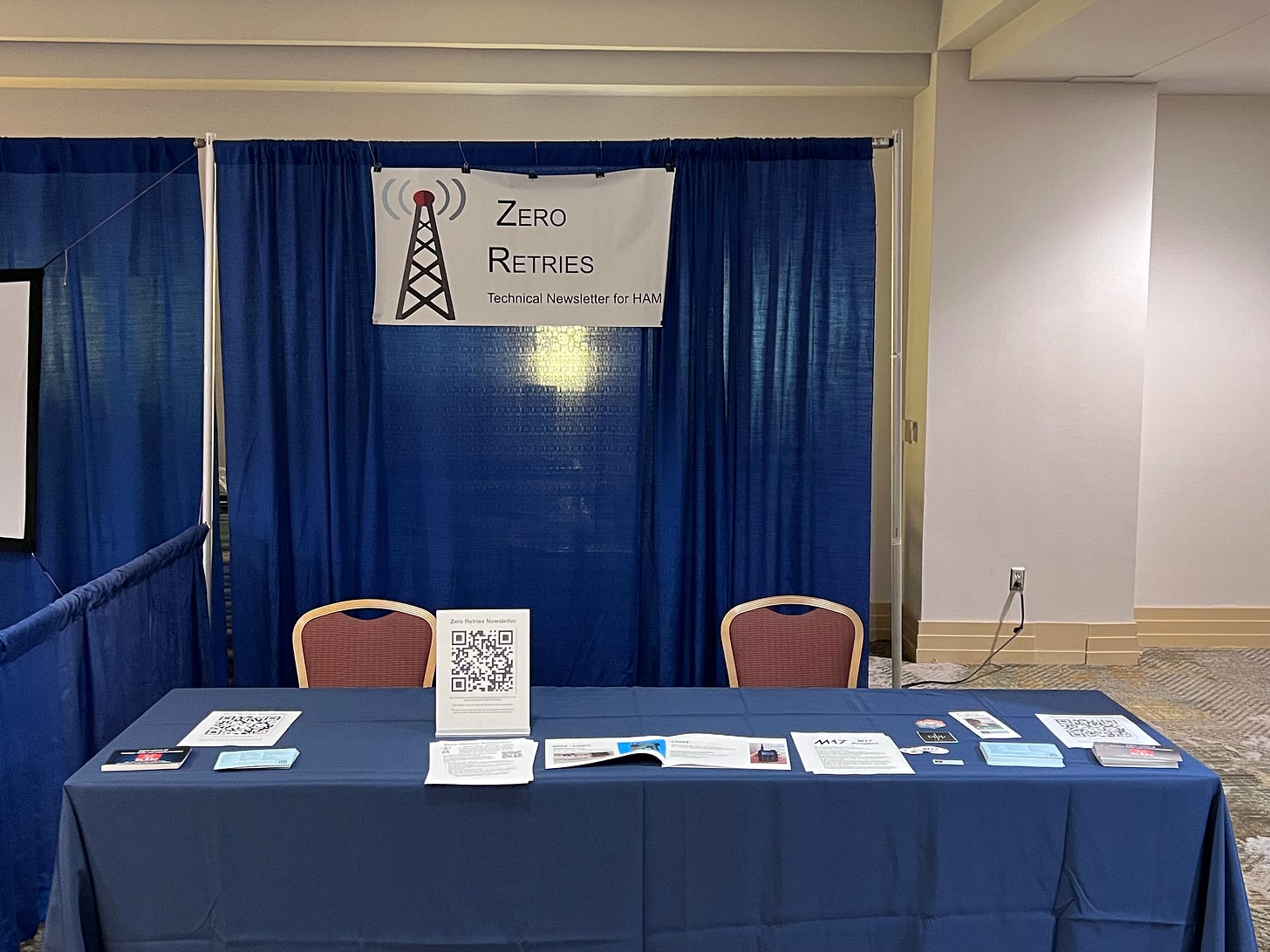
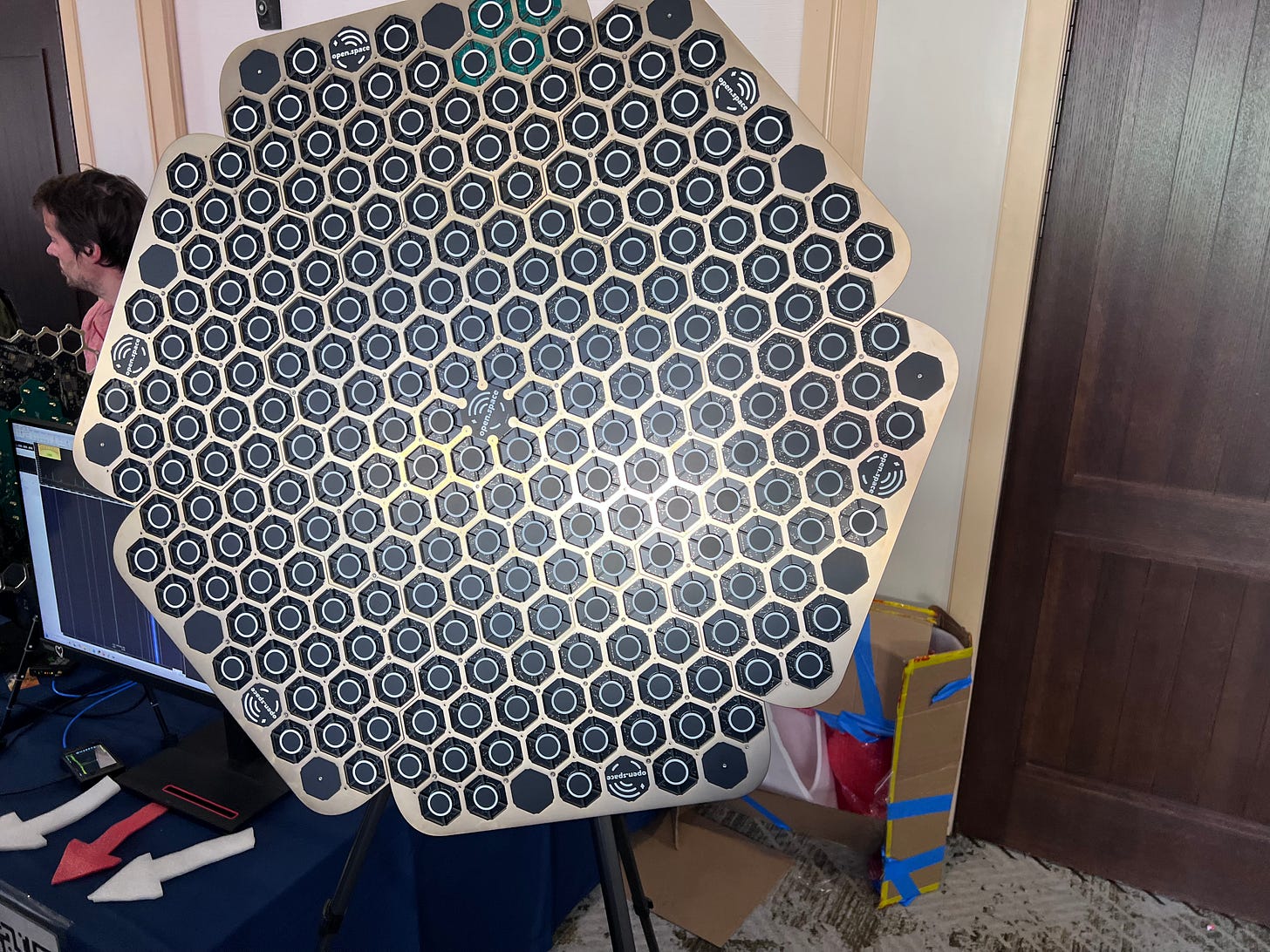
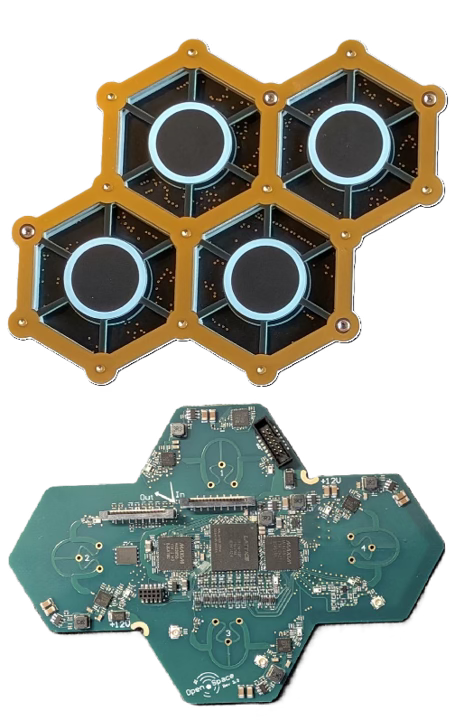
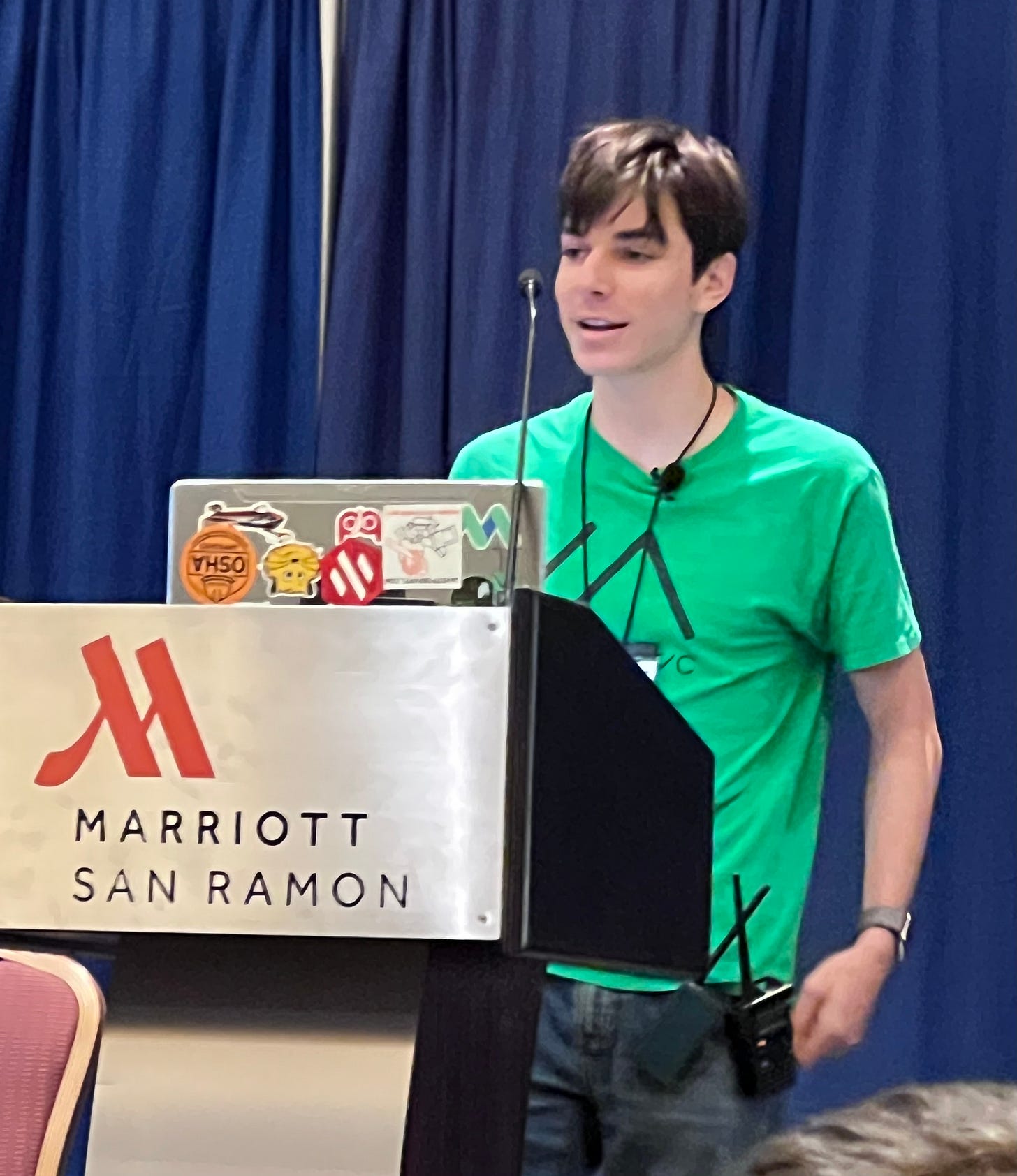
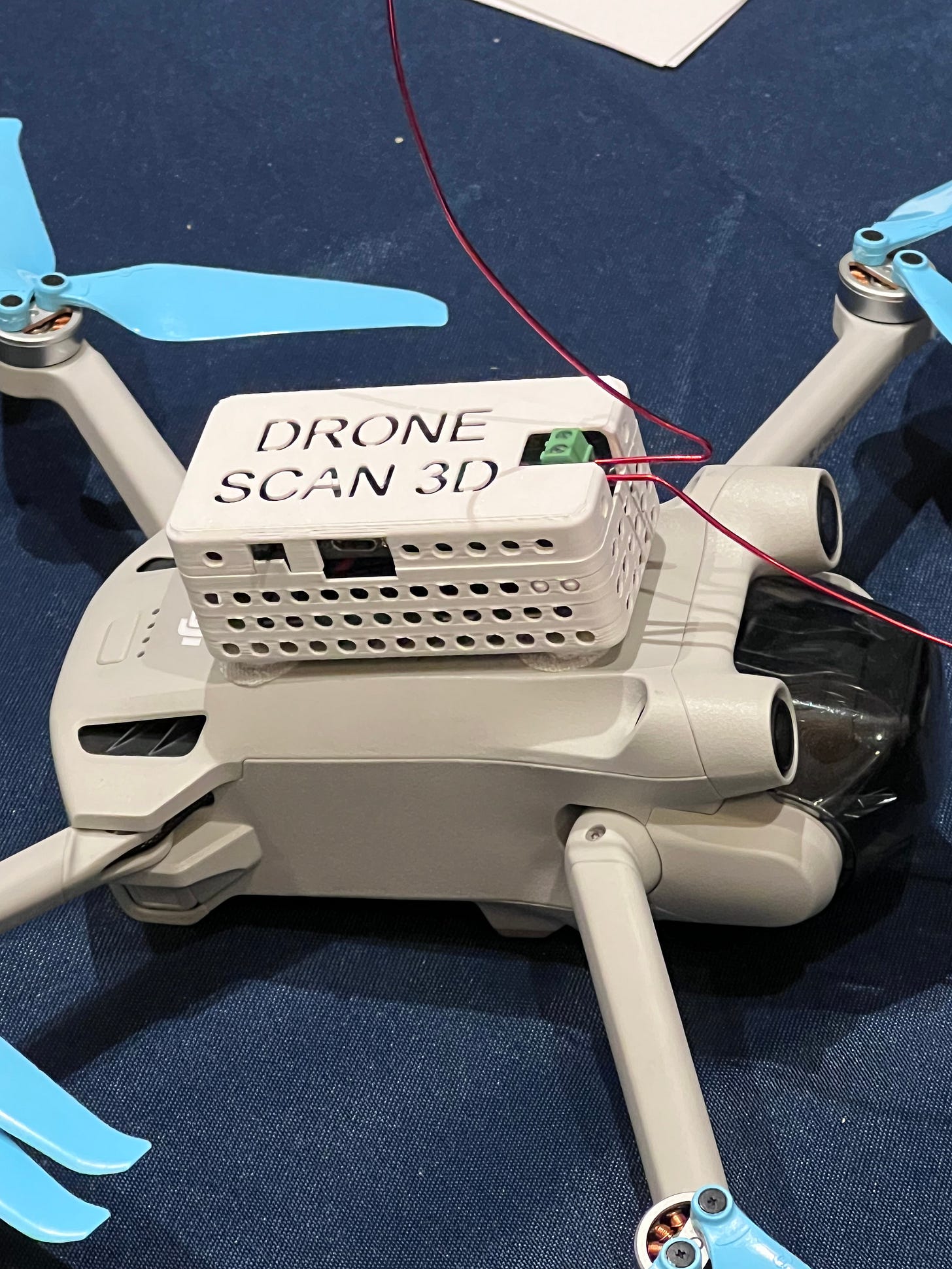
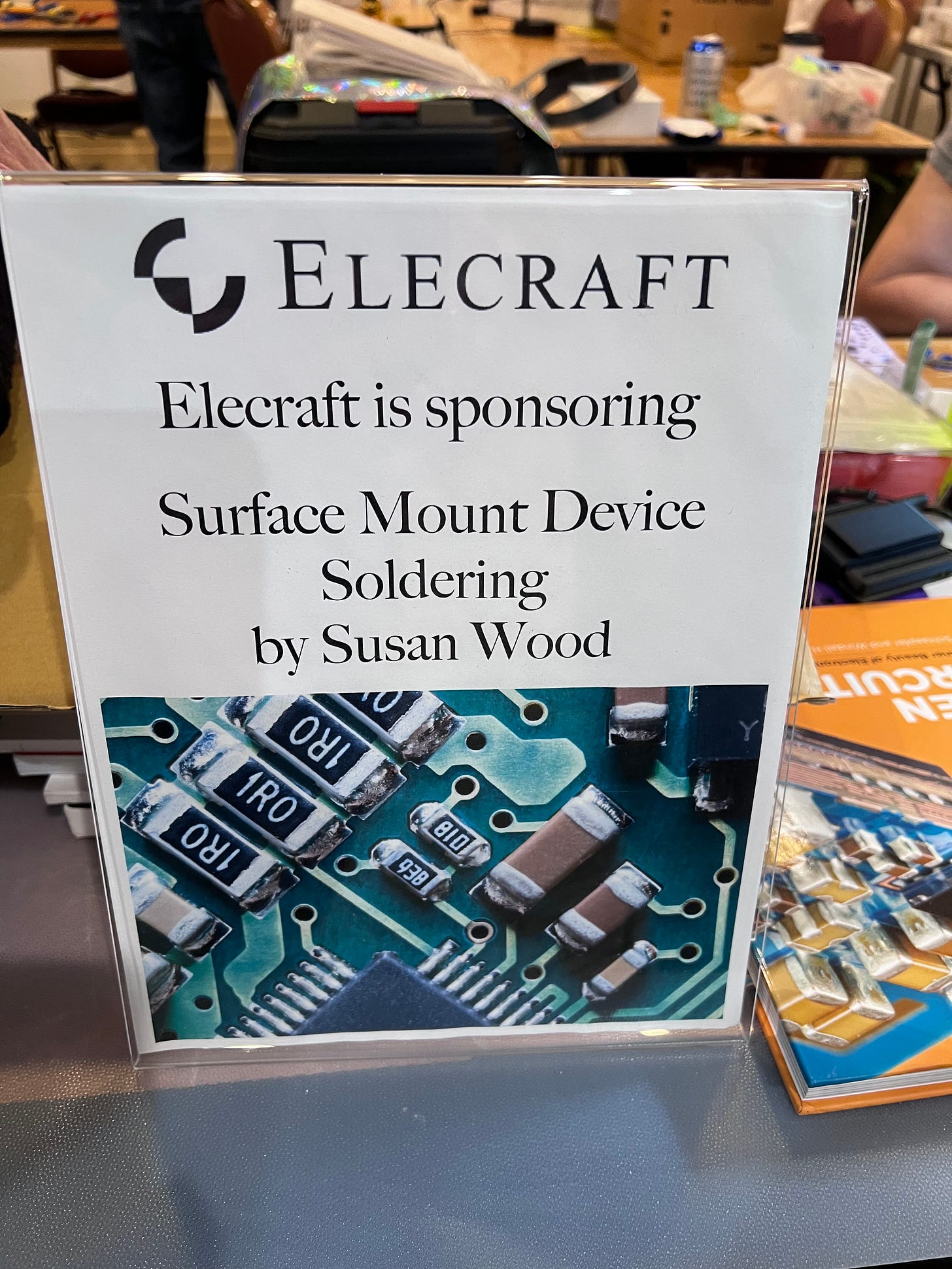
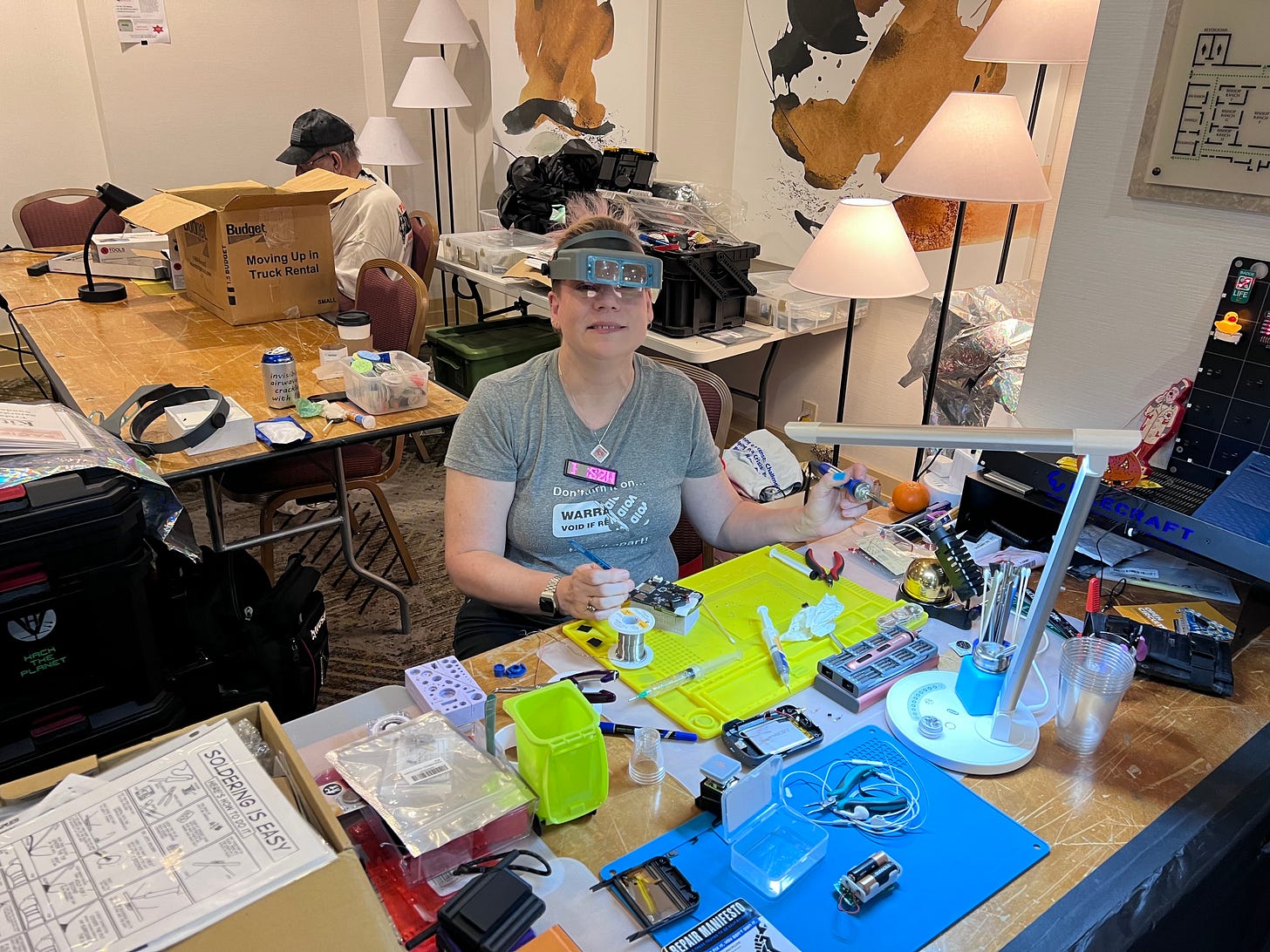
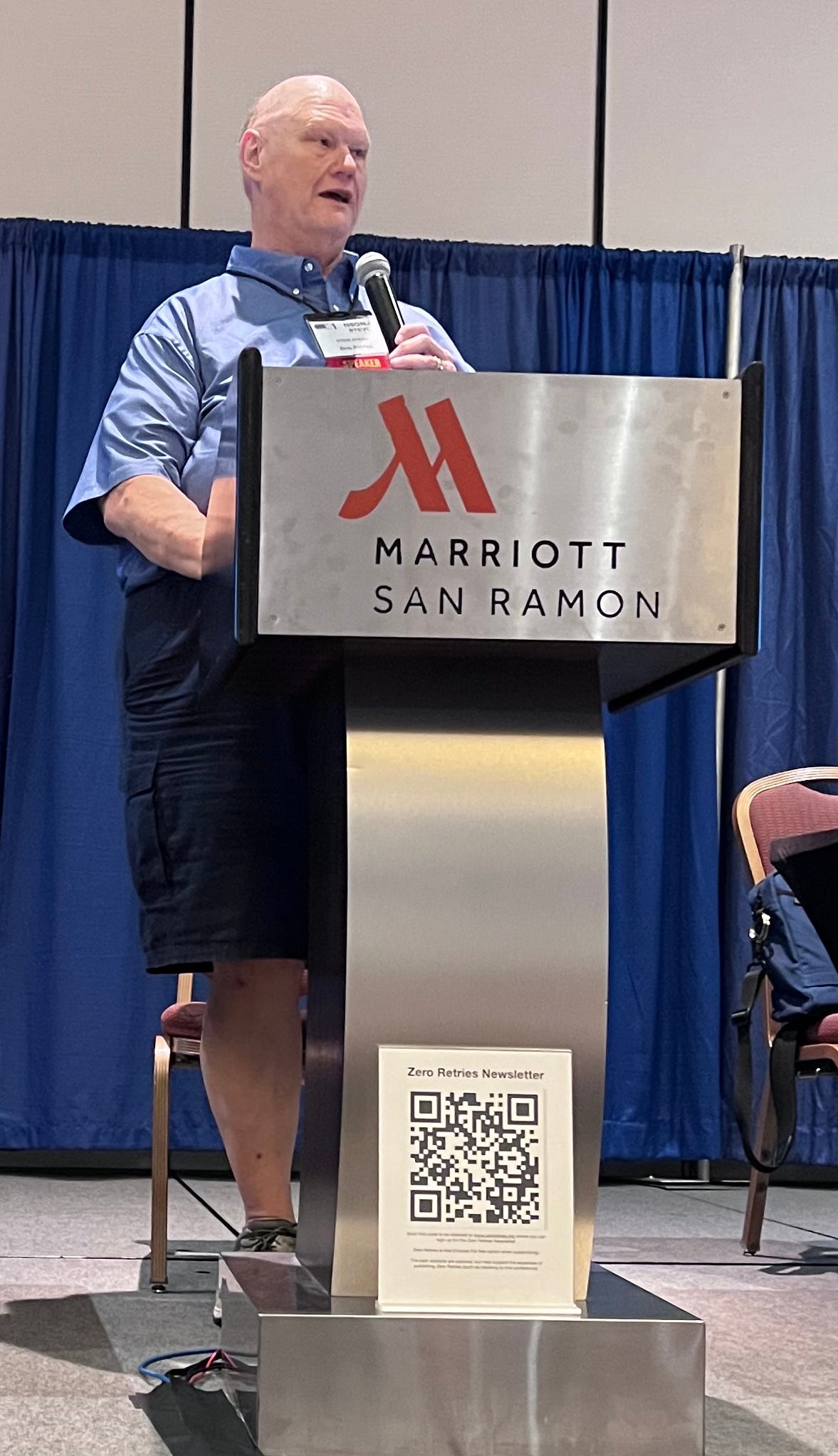
Steve, one of the things that makes Zero Retries worth reading every week is the verbosity and level of detail. Please do not shorten it, blurb it out, or otherwise "dumb it down". You'd be taking away one of the critical reasons why I read the newsletter "cover to cover" every week.
I'm curious about the "GT-DV" voice mode that was mentioned in passing during G4KLX's slides in the MMDVM presentation, as I hadn't heard of it before, and it doesn't seem like it's been mentioned previously in ZR either. Seems like it's still in the concept phase. I'm looking forward to see how the LinHT turns out, that should be a great testbed for trying out new digital modes like that.